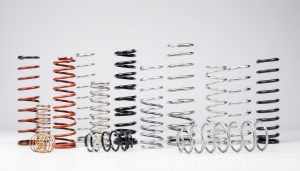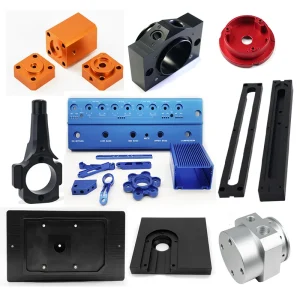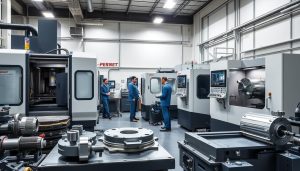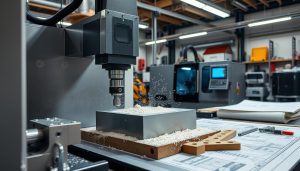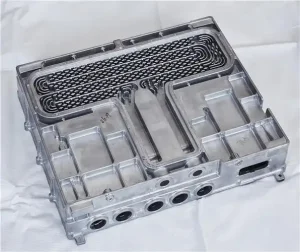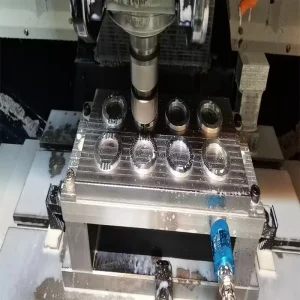The rack and pinion steering system is key for safe driving. It gives drivers the control they need on the road. This guide will explain how rack and pinion steering works and why it’s important.
Every vehicle has a rack and pinion steering mechanism at its core. It ensures smooth and precise steering. The rack and pinion system is vital for safe driving.
We’ll look at the parts and how rack and pinion steering works. We’ll also discuss its advantages and disadvantages. By the end, you’ll know a lot about rack and pinion steering and its role in driving.
What is Rack and Pinion Steering?
The rack and pinion system is key in a vehicle’s steering. It helps the vehicle respond quickly. It turns the steering wheel’s rotation into linear motion, letting the wheels turn.
This system has important parts like the steering rack, pinion gear, and tie rods. They work together for smooth steering.
The steering rack is at the heart of this system. It changes the pinion gear’s rotation into linear motion. This motion goes to the wheels through the tie rods, making the vehicle turn.
The rack and pinion system gives a direct and responsive steering feel. It’s why many vehicles use it.
Knowing the rack and pinion system’s parts is key to understanding its role. It shows how complex and precise a vehicle’s steering is. It’s important for safe and fun driving, whether on highways or city streets.
The rack and pinion system has many benefits. It’s compact, easy to maintain, and offers precise steering. Its design makes it a common feature in modern vehicles, giving drivers a reliable steering experience.
The Evolution of Steering Systems
The history of steering systems is both long and fascinating. The evolution of rack and pinion has been key in modern car design. Innovators have always aimed to make vehicles more efficient, safe, and perform better. The history of steering systems highlights important milestones, like the rack and pinion system, now common in many cars.
Notable changes in the evolution of rack and pinion include hydraulic power steering. It made steering easier. Then, electronic power steering came along, improving fuel efficiency and cutting emissions. These updates have made driving better and vehicles safer and more reliable.
Some key moments in steering system development are:
- Early steering mechanisms, such as the screw-and-nut system
- The introduction of the rack and pinion system, which offered improved efficiency and performance
- The development of power steering systems, including hydraulic and electronic variants
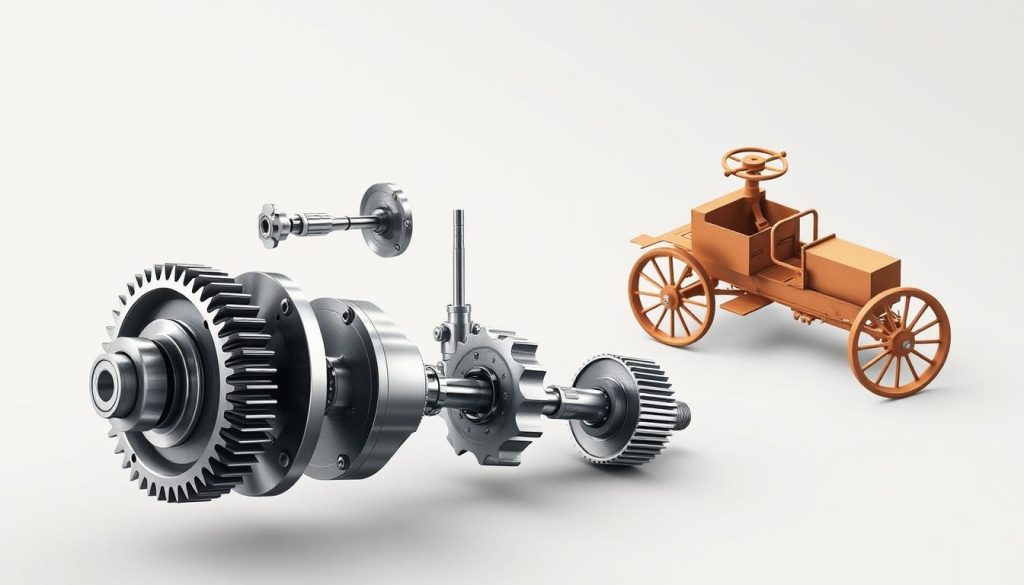
Knowing about the history of steering systems and the evolution of rack and pinion helps us understand modern cars better. It shows how innovations have shaped steering systems. This knowledge gives us a deeper appreciation for the design and function of today’s vehicles.
Components of a Rack and Pinion System
A rack and pinion system has several key parts. The steering rack is the main part. It changes the steering wheel’s rotation into straight motion. This motion helps the vehicle turn.
The pinion gear is also vital. It works with the steering rack for smooth steering. The pinion gear is on the steering column and fits with the rack’s teeth for reliable motion transfer.
Power steering components are also key. They include the power steering pump and hydraulic lines. These help the driver steer the vehicle, making it easier in modern cars.
Other important parts are tie rods and end links. They connect the steering rack to the wheels. This ensures a stable and secure connection. Knowing about these parts helps drivers understand their vehicle’s steering system better.
Benefits of Rack and Pinion Steering
The rack and pinion steering system has many benefits. It improves vehicle handling by giving direct and precise steering. This is great for sports cars or emergency vehicles that need sharp turns.
Another big plus is the responsiveness. The system connects the steering wheel directly to the wheels. This makes driving more engaging and responsive. Drivers love the feeling of being in control.
Some key benefits of rack and pinion steering are:
- Improved vehicle handling and stability
- Enhanced responsiveness and steering precision
- Reduced steering effort and fatigue
- Increased safety and control
In summary, rack and pinion steering is perfect for vehicles needing precise steering. Knowing its benefits helps drivers take better care of their vehicles. This ensures they stay safe and perform well on the road.
Common Problems and Troubleshooting
Rack and pinion steering systems can face issues like leaks, worn parts, and misalignment. Spotting these problems early helps avoid more damage and keeps driving safe. Troubleshooting involves steps to find the problem, and fixes depend on how serious it is.
Common rack and pinion problems include loose or worn-out tie rods, damaged pinion gears, and power steering leaks. These can lead to uneven tire wear, vibrating steering, and hard steering. Knowing how to troubleshoot and repair is key.
- Check for any visible signs of damage or wear
- Inspect the system for leaks or fluid loss
- Test the steering system for any unusual noises or vibrations
After finding the problem, fixes can be simple replacements or complex overhauls. Sometimes, you’ll need a mechanic’s help. Being aware of common issues and knowing how to fix them helps keep your vehicle’s steering system in good shape. This ensures safe and smooth driving.
| Problem | Symptoms | Repair Options |
|---|---|---|
| Loose tie rods | Uneven tire wear, vibrating steering wheel | Tie rod replacement, wheel alignment |
| Damaged pinion gear | Grinding or whining noises, difficulty steering | Pinion gear replacement, system overhaul |
| Power steering leaks | Fluid loss, difficulty steering | Seal replacement, system flush and refill |
Maintenance and Care Tips
Regular maintenance is key to keeping your rack and pinion steering system in top shape. Simple maintenance tips can help avoid problems and keep your vehicle’s steering smooth. Always check your steering system for wear and tear signs.
Preventive maintenance is also vital. This includes checking the power steering fluid, looking for damage on the steering rack and pinion, and lubricating as needed. These steps can prevent expensive repairs and keep your vehicle safe.
At times, you might need professional help for your rack and pinion steering system. If you face steering issues or hear odd noises, get a mechanic’s help. They can offer the right maintenance and repairs to ensure your safety on the road.
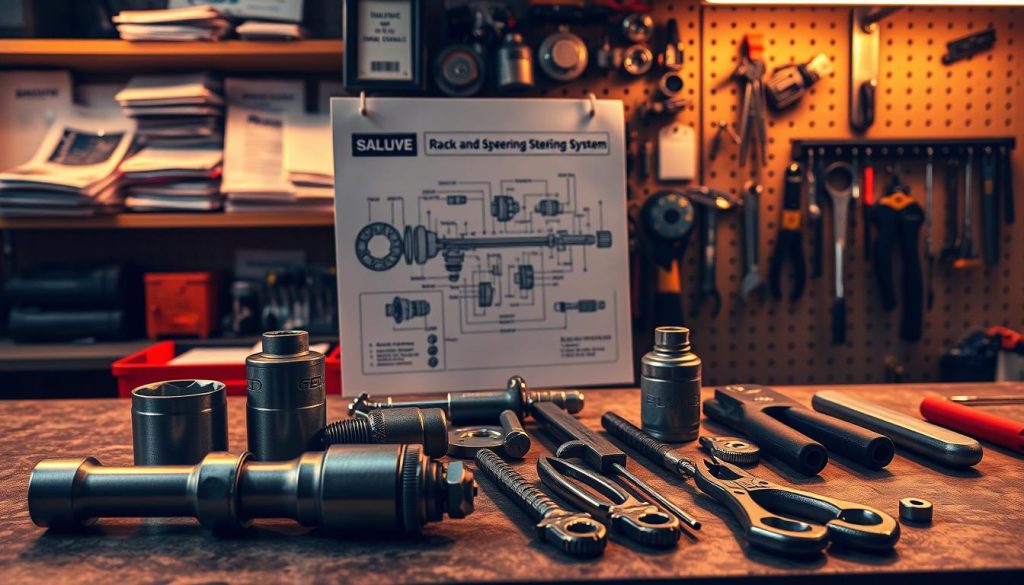
- Regularly inspecting the steering system for signs of wear and tear
- Checking the power steering fluid level and lubricating the system as needed
- Seeking professional help if you notice any signs of trouble
| Maintenance Task | Frequency |
|---|---|
| Inspect steering system | Every 6 months |
| Check power steering fluid level | Every 3 months |
| Lubricate steering system | As needed |
Conclusion: Understanding Your Vehicle’s Steering System
The rack and pinion steering system is key to your vehicle’s control and response. Knowing how it works helps you maintain your car. This ensures a safe and smooth drive.
Keeping up with vehicle maintenance and watching for steering issues is important. This knowledge lets you fix problems early, saving you money and hassle.
Your steering system affects how your car handles. Learning about and caring for it helps your car run well for a long time.
